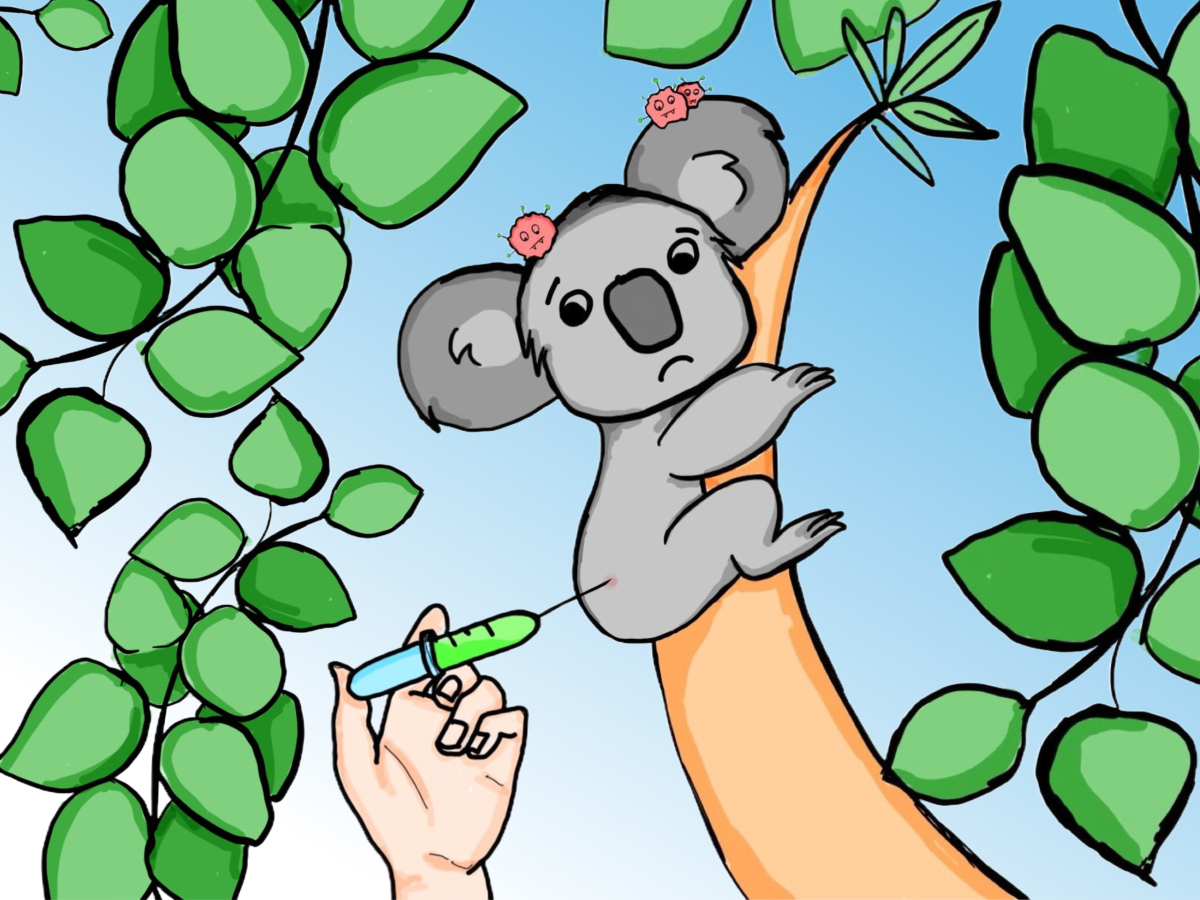Koalas face several threats from climate change to dog attacks and car collisions. They also face an ongoing battle with chlamydia. Wildlife disease management can include vaccine programs, which Australia has begun implementing this past year in order to prevent further population decline from this debilitating disease.
As if climate change implications aren’t enough of a concern, one of Australia’s most famous marsupial populations is also suffering at the hands of a sexually transmitted disease. Yes, you read that correctly. Humans are not the only species to suffer from such diseases. For decades the beloved koala population has been encountering threats in the form of habitat loss from human-development and climate change-enhanced wildfires, droughts, dog attacks, and car accidents, they now also suffer from Chlamydia pecorum bacterial infections.
How does Chlamydia affect koalas?
The C. pecorum strain is likely to have originated from the importation of domestic livestock following post-European colonization. Unfortunately, the disease hadn’t been recognized in koalas until the mid-late 20th century. This disease can be detrimental to koalas’ health for several reasons. It can cause ocular and respiratory disease that can eventually lead to blindness and pneumonia. Biologists, however, are most concerned about increased mortality and decreased fertility, furthering population decline. In 2000 the species was placed on the International Union for Conservation of Nature’s (IUCN) Red List of threatened species and is labeled as vulnerable. Australia, however, added the species to their Environmental Protection Biodiversity Conservation Act in 2012 and they have upgraded the species to endangered in 2022.
According to a 2020 study by Bonnie Quigley and Peter Timms from the Genecology Research Center in Queensland, Australia, koala population numbers are approximately 330,000 animals, a decline of about 28% in the last six years. Other organizations, however, claim it’s much lower than that. It is estimated that with their compounding threats, koalas could become extinct by 2050, resulting in a strong need for wildlife disease management programs.
Disease management for koalas
Chlamydia is mainly a sexually transmitted disease in koalas, but can also be spread from mother to offspring. Many females who become infected develop ovarian cysts that eventually lead to infertility within a year. Wildlife disease management for koalas typically consists of isolating the infected population, vaccinating individual animals, culling, genetic management, and habitat modification, like mitigating road impacts to minimize the koalas stress and control disease vectors. Although disease vector management doesn’t really apply and culling animals is unlikely, humane euthanasia may be warranted due to animal suffering. Isolating the species could have benefits against the disease but may lead to loss of genetic diversity over time. Therefore, vaccination programs and genetic management may be the koala’s best option.
Genetic management of a species against a disease simply means helping accelerate the species evolutionary adaptation to the infection becoming either more tolerant or resistant to it. This has been rarely studied in this context, but it is likely, however, that koalas have already developed genetic adaptation to this infection. Unfortunately, high environmental stressors could be causing immunosuppression, a reduced immune system response and effectiveness to diseases, facilitating disease for the bacteria already present. This means that an animal may be infected without having or “showing” the disease, but if an animal experiences a wildfire, drought, or other stressful situations then their immune system may not be able to suppress the disease anymore and it can surface.
Vaccinations may be key to the koala’s future
While more research is needed on genetic management, the Australian government has started its first koala vaccination program this past year. Most wildlife vaccination programs are young and have been actually designed to protect humans, for instance, vaccinating raccoons that could come into contact with people against rabies. Others have been designed to vaccinate the sources of the disease, like distemper in weasels and badgers that could affect Siberian tigers. This is because a vaccine for tigers does not yet exist. Other examples of vaccine programs in wildlife management include vaccinating bats against white-nose syndrome caused by fungus, and vaccinating prairie dogs against sylvatic plague to protect their predators, the endangered black-footed ferrets.
Australia’s koala vaccination program is designed to reduce infectiousness in healthy koalas to prevent the spread of disease and keep stable fertility levels. The vaccine is a single-shot, and koala’s are safely trapped in their habitat, injected, marked with pink dye, and monitored to ensure no harmful side effects. While this vaccine won’t necessarily rid the population of disease, it may help prevent the disease from affecting population numbers which is ultimately the goal to protect this iconic species.
Sources:
Mongaby – Not just for humans — scientists turn to vaccines to save endangered species
CNN – Koalas are dying from chlamydia, and climate change is making it worse
NPR – In Australia, scientists begin vaccinating koalas against chlamydia
You may also be interested in these articles:
Drones – Technology in Wildlife Research



